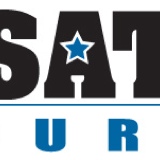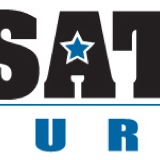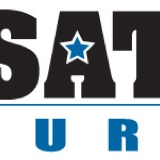Information
-
Document No.
-
Audit Title
-
Client / Site
-
Conducted on
-
Prepared by
-
Location
-
Personnel
-
Select date
-
Add location
Maintenance Work in the Area About the Barrier
-
Confirm that the Barrier operates smoothly during the raise and lower cycle. Adjust<br>speeds as desired.
-
Check all control functions for complete operation of all features.
-
Select Barrier UP or DOWN position as desired from the control panel
-
Turn control panel key switch to OFF position and remove key
-
Turn system power OFF at the disconnect on the hydraulic power (HPU). Padlock teh disconnect with your personal lock.
-
If Barrier is in the UP position, securely block Barrier to prevent falling. Note: Lifting eyes<br>secured in the tapped holes provided in the top plates can be used for chaining the Barrier<br>in the UP position.
-
Proceed with maintenance.
-
When all work is finished, remove padlock and turn HPU disconnect ON. Close any valves<br>opened in the bleed down procedure. Return panel key to the control panel.
-
Proceed with maintenance. Minimize any exposure to working under the Barrier by using<br>when ever possible tools with handle extensions.
-
Remove Barrier top plates, check that the hydraulic cylinders are not leaking internally<br>(see Hydraulic Trouble Shooting section for details). Replace cylinder seals or cylinder as<br>necessary.
-
Check cylinder clevis pins for wear, replace as necessary.
-
Examine the foundation frame for debris buildup, check drain lines and sump wells for<br>drainage. Clean debris.
-
Tighten or replace any loose top plate bolts. Drill and tap to next size or use inserts if<br>threads are stripped.
-
Check condition of the Barrier paint surface and record if touch up of paint required. Apply new reflective tape as necessary.
-
Check hydraulic interconnect lines for kinks, contact wear or bulging. Replace or protect<br>hoses as required.
-
Replace the oil filter. If cycle rate is greater than 100 cycles per day, or the location is in a high dust environment, recommend replace filter monthly.
-
Check the accumulator pressure while the system is at zero pressure using Delta<br>Charging Kit 2469-31 or equal. If tool is not available, observe the value that the pressure<br>gage jumps to when power is again turned on. (See Hydraulic Section for details.) Log<br>value and pressure setting on Log sheet provided.
-
Test motor starter overloads by pressing the test button. Replace if necessary or press<br>reset. Auto/Manual switch should be in the Manual position.
-
Bleed down the system:
-
If system is equipped with the optional auxiliary emergency fast operate system,<br>release the auxiliary EFO valve override pin by twisting and pulling to the out<br>position.
-
Release set screw (or lock nut) on the system bleed down valve. Turn (anticlockwise)<br>the handle on the valve slightly until hissing sound is heard. Continue to<br>open slowly until pressure on gage reads zero.
-
For added safety, leave valve open while performing maintenance.
-
Thoroughly clean the HPU, removing dust and spilled oil. Remove any rust build up on<br>components. Touch up paint where necessary.
-
Add clean, oil to the top of the site glass.
-
Remove Barrier top plates and check for debris build up in the bottom of the foundation<br>frame. Check for indications of oil leaks around the cylinders and Barrier header fittings.<br>Tighten fittings and clean debris as necessary.
-
Check the tightness of each of the sixteen hardened steel cap screws holding the four<br>bearing blocks. Anti-seize compound has been used on the bolts, reapply if you remove<br>the bolts. The proper torque value is 45 foot-lbs [60 N-M]. Check for sand and debris<br>about the bearings and shafts and clean if necessary. Inspect and lubricate all bronze<br>style bearings and pins. Graphite/fiberglass bearings should be inspected for any damage<br>and replaced as necessary, lubrication of these style bearings is optional. Reinstall top<br>plates; check all top plate bolts for tightness. Note any tendencies for the top plate bolts to<br>loosen.
-
Check the operation of the Barrier heaters if so equipped. They should get warm in<br>approximately one minute after energization.
-
Test motor starter overloads by pressing the test button. Replace if necessary or press<br>reset. Auto/Manual switch should be in the Manual position.
-
Check the pressure relief valve by depressing the starter armature and allowing unit to run<br>to the relief pressure value of 2200 psig [152 bar]. Adjust as necessary.
-
Clean dust and debris from around HPU tank and hydraulic lines.
-
Check all control functions for complete operation of all features.
Signature Acknowledgement
-
ELECTRONIC SIGNATURE ACKNOWLEDGE, I AGREE THAT MY ELECTRONIC SIGNATURE IS A LEGALLY BINDING EQUIVALENT TO MY HANDWRITTEN SIGNATURE. WHENEVER I EXECUTE AN ELECTRONIC SIGNATURE, IT HAS THE SAME VALIDITY AND MEANING AS MY HANDWRITTEN SIGNATURE. I WILL NOT AT ANY TIME IN THE FUTURE, REPUDIATE THE MEANING OF MY ELECTRONIC SIGNATURE OR CLAIM THAT MY ELECTRONIC SIGNATURE IS NOT LEGALLY BINDING.
-
End-User Representative
-
NASATKA Representative












